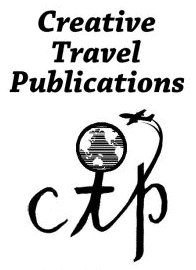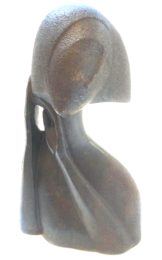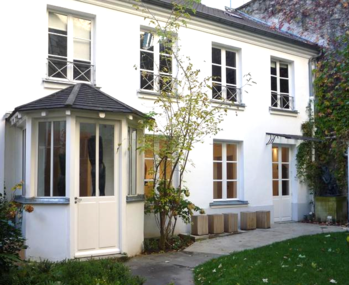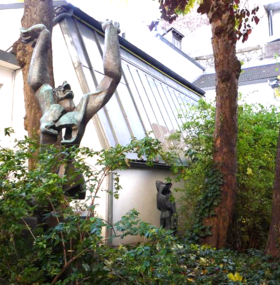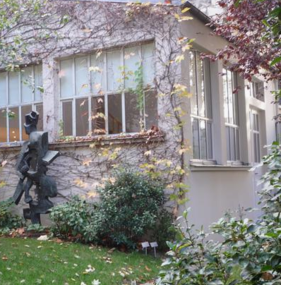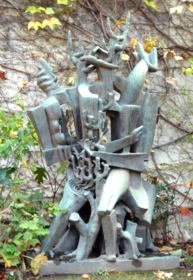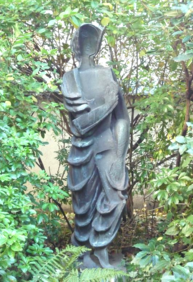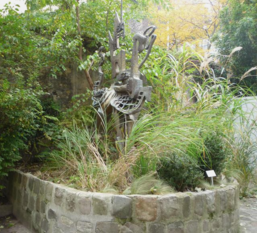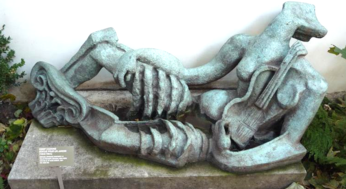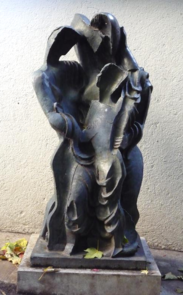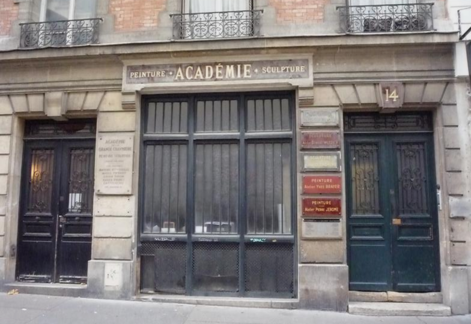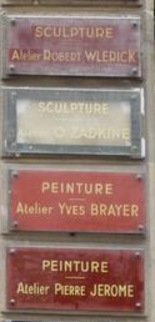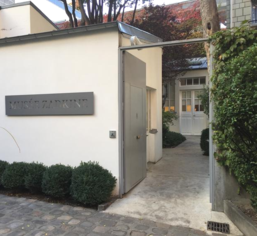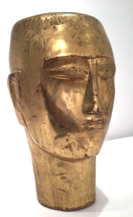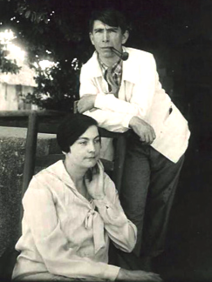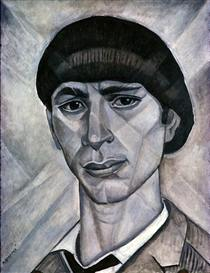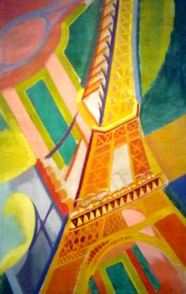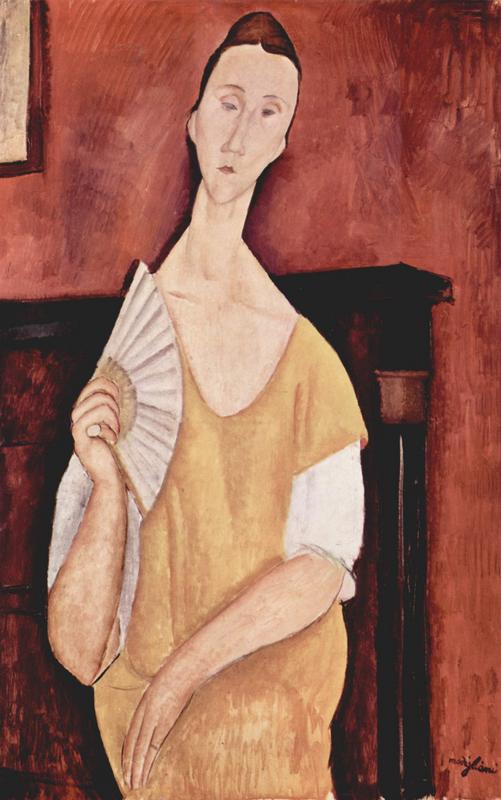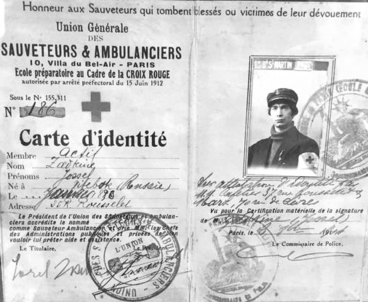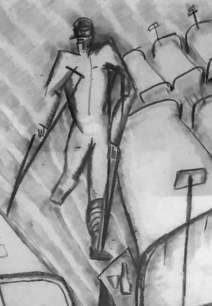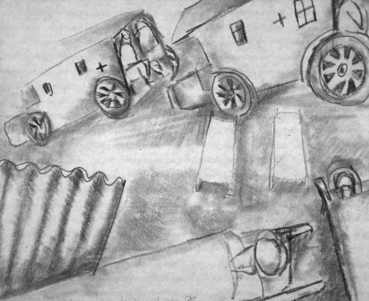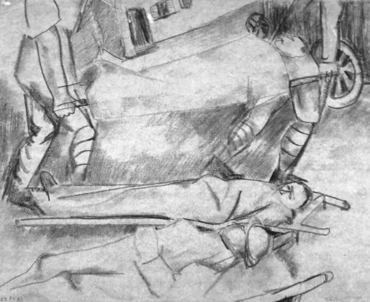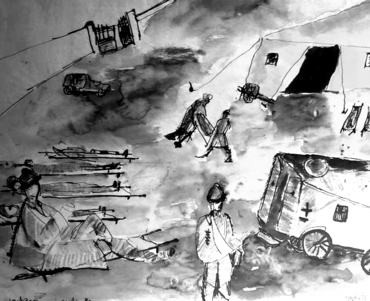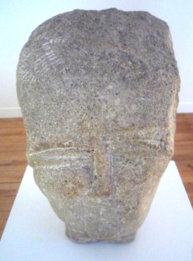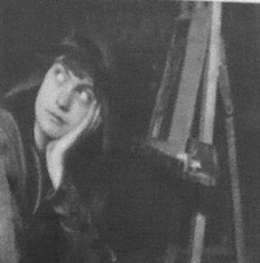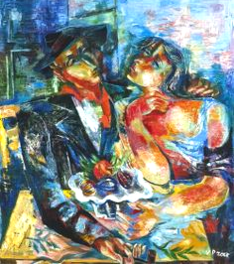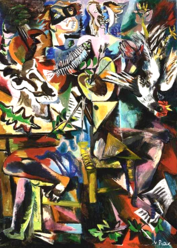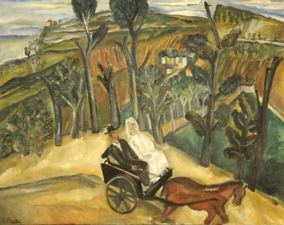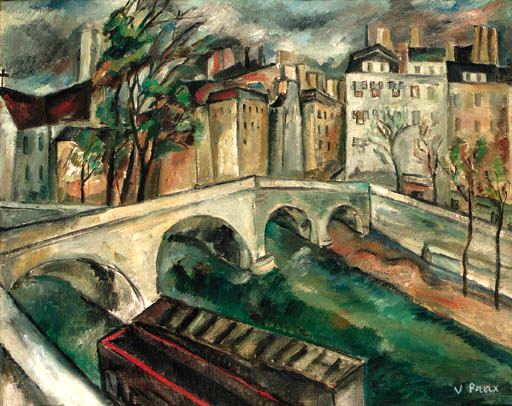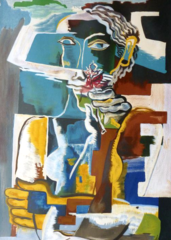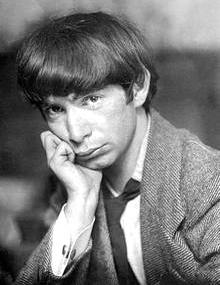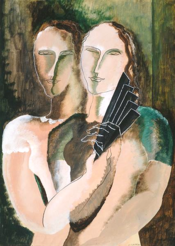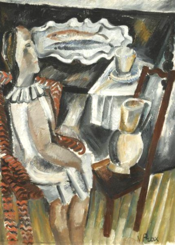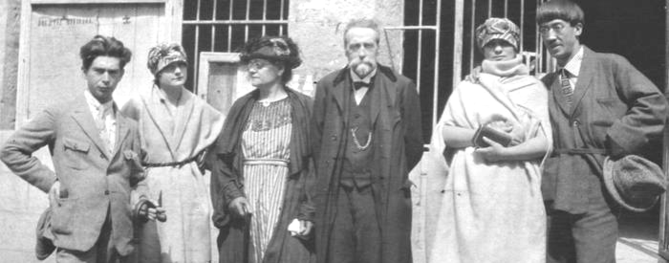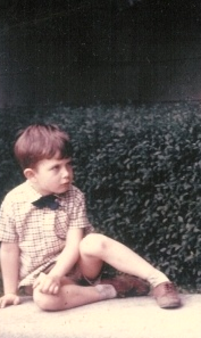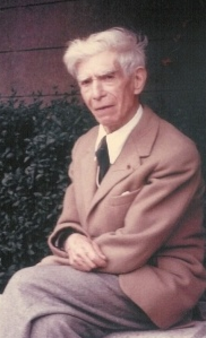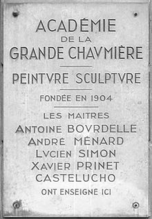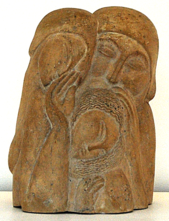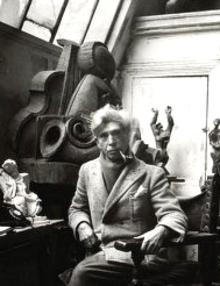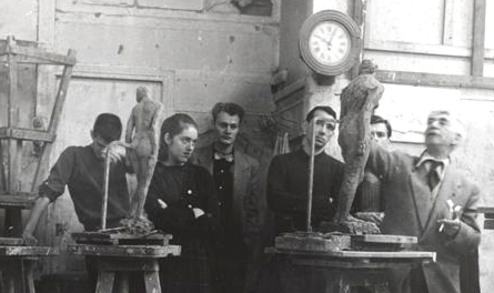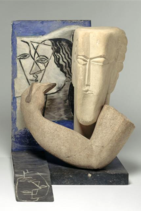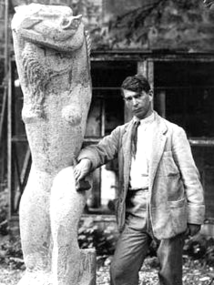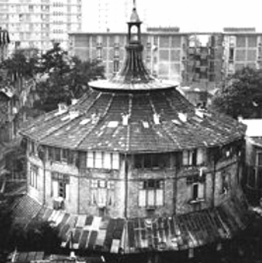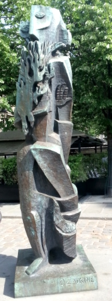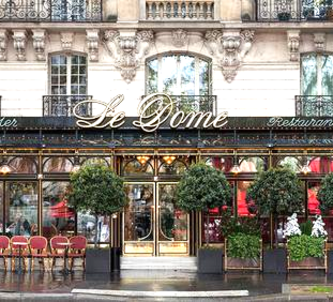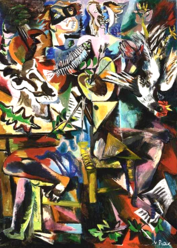Women's Travel Abroad
For Women About Women By Women
Destinations
Zadkine Museum - Paris for Free
Musee Zadkine de la Ville de Paris
zadkine.paris.fr
Across from Luxenbourg Garden and down a block, on the avenue Rue d'Assas, is the location of the Zadkine Museum. The museum is tucked away behind a row of apartment buildings. It is easy to walk by because there is just a small sign marking the entrance. However, this atelier of the artists Ossip Zadkine and Valentine Prax is well worth finding. It is a lovely oasis of art in Paris's Montparnasse district.
I walk under the impasse archway on a cobbled street with some trepidation. I feel as if I am trespassing on private property until I see straight ahead a fascinating sculpture amidst a grassy garden and the official museum sign to my right. This brief walk at the end of the impasse is where I find the charming Zadkine Museum.
This museum is one of the city of Paris's free museums. However, today there is a special of exhibit of Zadine's drawings from the time he spent as a medic in World War I. I pay my 8 euro entry fee and proceed to explore the museum. There is a bookstore but I am not able to find a book in English about Zadkine or Prax so I must depend on my exhibit and museum brochure for information.
Ossip Zadkine and Valentine Prax shared quite a few things in common besides being a married couple. Both Zadkine and Prax had immigrated to France in early 1900s, found their own places in the Parisian expat art circle, and were influenced by the primitive and cubist art movement. At times their personal and professional lives diverged but they never seem to have lost their genuine appreciation of each other as individuals or artists.
In 1995 the museum implemented a policy of exhibiting contemporary art by artists who had influenced Zadkine, were his familiars, or had worked around the same time as him. However, when it comes to recognising Prax I feel the museum has been a bit neglectful. Museum curators do not promote the vital role she played in establishing the museum. Sadly, as I wander through the museum I find little of her art on exhibit. Yet, Prax also spent most of her life creating her oil paintings working alongside Zadkine while he sculpted.
Prax gifted the city of Paris with their house, studio, and much of Zadkine's art work including more than 400 sculptures and 300 drawings. The Zadkine Museum opened in 1982. Since then it has undergone several renovations. This is one of the city museums that has always been handicapped accessible because it is all on one floor. A new restroom inside the museum has been adapted for special needs visitors. There is a documentation center, open by appointment, with a variety of material by and about Zadkine.
zadkine.com
Ossip Zadkine (Yossel Aronovich Tsadkin) was born in Vitsebsk, Smolensk, Russia on July 4, 1890. His father, Ephime Zadkine, was an academic who taught Latin and Greek. His mother, Sophie Lester, was from a local family who worked in the forestry business. His Jewish father converted to the Russian Orthodox religion in order to marry his mother.
In 1905 his father and mother sent him to live with an uncle in Sunderland, England where Zadkine attended a local art school. It is probable his parents felt their son would have more opportunities to develop his artistic talent in a less restrictive environment than communist Russia. A year later, without parental approval, Zadkine joined a friend in London.
His parents angrily refused to provide him with funds for this youthful adventure. While in London Zadkine attended Regent Street Polytechnic. He earned money by carving ornamental designs in wood and took drawing classes in the evening. Zadkine studied in London for two more years at the Central School of Arts and Crafts working on mastering techniques of wood carving.
Zadkine returned home in 1908 and reconciled with his parents. With their financial support he was able to move to Paris in 1910. Zadkine took classes at Ecole des Beaux Arts in Paris for six months. A year later he exhibited in Paris at Salon des Independents (Independent Artist's Exhibit).
Obviously, Zadkine had come a long way since leaving his small town of Vitsebsk by the the time he was twenty-one years old. However, it appears he did not like being a student at a formal art school with it's competitive shows. Instead, he choose to work in a shared studio with other young foreign artists exploring art on his own terms.
He frequently visited the city's famous art museums and attended art exhibits around the city. The ancient artifacts from Asia, Africa, and America he saw at the Louvre Museum inspired him to use primitive shapes and lines in his sculptures. He met his avante garde friends at smoky Montparnasse cafes, La Cafe du Dome and La Ronde, to discuss the past, present, and future of art.
Zadkine was reputed to be a kind, affable man . Photographs of Zadkine, often taken of him smoking a pipe, show him as a handsome man with the joyous spirit Parisians find so alluring. He liked being with his artistic colleagues. They liked his company. But Zadkine returned to Paris a changed man only to find the city had changed too. Gone were the nights he would leisurely spend visiting with his friends at the La Ronde or Cafe du Dome. No longer could he linger for hours at a table talking with them until the sun rose. Sadly, many of them were still fighting in the trenches or had died in the war.
Zadkine was what we call an independent learner. The world was his classroom. He studied the art works of the great masters of his time. Among his teachers were the sculpture artists August Rodin and Antoine Bourdelle. He learned about avant garde painting from Amedio Modigliani, Henri Matisse, Robert Delauney, and Picasso. Many of them were happy to call him both their friend and colleague. In 1914 he decided to embrace cubism and futurism continuing to predominately work in those art styles until 1925. Zadkine was a versatile and experiemental artist. He drew with charcoal and pastels, painted in water color and oil, and sculpted in plaster, wood, and metal. He combined many of these mediums to create innovative works of art. The same year, 1914, Zadkine exhibited his art at shows in Berlin (Freie Sezession), London (Allied Artists Association), and Amsterdam (De Onafhakelijken).
The Eiffel Tower
Robert Delaunay
Woman With Fan
Amedeo Modigliani
Things seem to be looking up for the young Zadkine. His was being recognized in the artistic community as a seroius professional but only one year later the world was in a terrible state of affairs. A war broke out that would ultimately lead to Zadkine volunteering as a strecher bearer in the Sauveteurs & Ambulance Corp. Art from this time of his life is the featured exhibit .
Quite honestly, this is the kind of art exhibit I try very hard to avoid. I cannot imagine anything worse than seeing images of war. However, I decide to have a look so I might get insights into the realities of this artist's life. My husband is here with me on this visit to the museum. He probably has a much better understanding of what Zadkine experienced. My husband also served in the military during a war.
We go our separate ways for a while and try to find our own meaning from this exhibit. At the outbreak of the war Zadkine was 26 years old and one of the 45,000 foreigners living in France at that time. The majority of immigrants were from Russia. In 1914, the year before he enlisted, Zadkine was already a member of the Union of Rescue Workers and Stretcher Bearers of Paris trained by the Red Cross. He continued his medical training in Paris with the 1st Section of military nurses for another year.
On May 31, 1916 he was posted to the 22nd Section of military nurses and sent to the front line at the Russian ambulance base in the Champagne region of France. He worked there as a stretcher bearer for several months. In the fall of that year Zadkine was transferred to the defensive line of the city of Rheims. In Rheims he and his fellow stretcher bearers were responsible for safely transporting wounded soldiers from the first aid station at the trenches to a nearby makeshift field hospital.
Every day Zadkine saw first hand the horrific ravages of war. It must have been difficult for him to have been exposed to so much suffering and pain. During my life time I have not dealt with anything as devastating as a war in my country. Although I did have to hear the night cries of my brother after he returned from the battlefields of Viet Nam. He, like Zadkine, was also an aspiring artist before he was drafted and sent off to war. Our family felt blessed when he came home alive but war changed him. He never painted again and died too young from cancer caused by his exposure to agent orange.
Chemical agents were also used on the battlefields of World War I. But instead of using pesticides to clear the dense foilage of Viet Nam's rain forests the chemicals used on the World War I battlefields were meant to render enemy soldiers incapable of fighting. Zadkine was exposed to an attack of mustard gas, a mixture of phosgene and chlorine, while on duty in Rheims. Over the next year he was sent from one hospital to another in Epernay, Paris, Auteuil, and Clingancourt for treatment. On October 7,1917 he was discharged after being diagnosed with severe lung damage from chemical agents.
Inside my brochure about this exhibit, Destins Des Guerre, I find a copy of T. S. Eliot's famous poem Les Hommes Creux written just after the war. The poem begins with the line "we are the hollow men, we are the stuffed men." While it may be true Zadkine was a 'hollow men' he had the good sense to use his art to fill his personal emptiness and express his concern for the future of mankind.
He began these charcoal drawings during the years he was in the field and being shuffled from hospital to hospital. They show the beginnings of primitivism in Zadkine's art but there are also the fractured shapes of cubism in the drawings. I feel touched by his simple, honest style. For me Zadkine's severity of line and minimalism intensifies the harshness of war.
When Zadkine returned to Paris he began transcribing them onto metal plates. This activity was his way of dealing with post traumatic stress. Art was his strategy to manage this frightening part of his life and move on to a more hopeful tomorrow. He dedicated the etchings to Helene Isvolsky, the daughter of the Russian ambassador in France.
Zadkine's military experience and subsequent poor health appears to have had a profound affect on his artistic expression for a long time after the war ended. The bust on the left was done in 1914 a year before he enlisted. The lines are graceful, elegant, and fluid. They flow from one to another creating a sense of interior sereneness under the pebbly surface. The bust on the right was done in 1918 a couple of years after Zadkine returned from the war. The spareness of features is frightening. All the facial details that let us know this is a fellow human being are marginalized and distorted. This sculpture looks more like a monster than a man. I wonder if that is what the artist wants me to see. Is Zadkine showing me what he sees inside himself, in the outside world, or both?
Fortunately for us, this shattered man did not surrender to despair or withdraw from the world. Instead, he continued to search for his authentic artistic identity and enjoy the company of friends his entire life. Zadkine sketched in chalk and painted in oils. He sculpted in clay, marble, terricotta, plaster, marble, and granite. However, wood may have been his medium of choice. He was a master carver and worked with many different kinds of wood including walnut, pear, cedar, elm, acacia, and ebony. His subjects were almost always people.
Then something wonderful happened to Ossip Zadkine. In 1919 he met the artist Valentine Henriette Prax. She had just finished three years of schooling at the Ecole des Beau Arts in Algiers. Prax was only twenty two years old when she bravely left home and moved to Paris. She was determined to follow her dream of having a successful art career in the city of lights.
Prax was born in Annaba, Algeria on July 23, 1897. Her father, Henri, was a Catalonian who worked in the forestry business and served as a Vice Counsel for Spain and Portugal. Henri wrote poems and instilled a love of poetry in his daughter. Her mother was from Sicily. It is likely Valentine was fluent in French, Sicilian, and Algerian.
When Prax arrived in Paris she rented a small first floor painter studio at 35 Rue Rousselet, Montparnasse for 50 francs a month. The resident artists called the building La Ruche because it resembled a bee hive. Prax preferred to call it her 'glass bird cage'. Coincidentally, Zadkine occupied a second floor sculpture studio. It is probable they met in a neighborly encounter on the stairwell that led to a conversation.
Of course, it was about art. Prax showed him her drawings but Zadkine was unimpressed. He thought she lacked the style and sophistication an artist needed to succeed in Paris and told her to write poetry instead. She may have been too timid to verbally respond to his criticism but she was confident in her abilities. Prax kept right on painting despite his negative reaction to her art.
Zadkine must have been impressed with her determinism and commitment. In spite of his initial belief that she lacked talent Zadkine introduced her to his friends at Montparnasse's artist cafes. He took her to museums and exhibitions sharing with Prax his feelings about art and opinons about other artists work. Zadkine wanted to give her an opportunity to experience art not 'for arts sake' but for her sake as an artist.
His mentoring seem to have had some affect on Prax. She set her easel up outdoors in rural towns surrounding Paris and painted their natural landscapes in harmonious colors of grey, brown, and green. On Sunday Zadkine would join her in Clamart, Montfort, or Marley-le-Roi and they would paint together. I wonder if during this time sharing their love of art is also the time Zadkine realized he may also have met the love of his life.
Ile Saint Louis, Valentine Prax,
Wedding Couple, Valentine Prax
In 1918 Zadkine exhibited a considerable number of his drawings and a few completed sculptures at the Galerie Chappe-Lautier in Toulouse, France. During 1919 he worked fervently to put on a solo exhibit of forty nine sculptures from wood, stone, and marble in his own workshop. In the spring of 1920 Prax had her first solo exhibition at the Galerie Mouninou on Rue Marbeuf.
Then the hot days of summer came to Paris. Both Zadkine and Prax left the for cooler climes. Zadkine was invited by his painter friend Henri Ramey to spend the summer in the charming, medieval town of Bruniquel, France. Prax had been invited to spend her summer in Collioure, France with her artistic friends Foujita and Fernande Barrey. So Zadkine and Prax went their separate ways.
While in Collioure she received a telegram from Zadkine. He wrote, "Come, let's talk about marriage," and apparently that is just what they did. On August 14, 1920 the two penniless artists married. Prax's parents came from Algeria to attend the ceremony. Her friend Foujita acted as witness. Instead of a veil the bride wore a turban designed by Barrey and the groom showed up wearing an old pair of espadrilles. They finalized their marriage vows with borrowed wedding rings.
Portrait of Ossip Zadkine
Marvena Vorobieff
The couple returned to Paris in the fall of 1920 and started preparing for exhibitions. Prax showed her paintings at the Galerie La Licorne run by the art collector and critic Maurice Giradin. He felt her art was fresh, free of embellishment, and spontaneous. At the time Giradin said Prax's art showed an "ingenuity which laughs in the face of ignorance."
Zborowski, an art dealer and friend of Modigliani, bought several of her canvases. He also opened an account for her with an art supplies dealer so Valentine could paint with peace of mind. Prax began to develop her unique style and painted on glass which led to commercial success.
In 1924 she had her fist solo exhibit at the Galerie Berthe Weill in Paris. She exhibited in Brussell at the Galerie Le Centaure in 1927 and the Palais des Beaux Arts in Brussels in 1927. Her paintings were shown in London, Chicago, and Philadelphia. In 1937 Prax was commissioned to paint a glass window at the Museum of Modern art on the theme of aviation.
Prax liked to weave images of the ocean, sailboats, and fish, from her girlhood in Algiers, into her paintings. Prax and Zadkine had a love of music. Both frequently integrated musical instruments (violins, violas, and the accordians) into their paintings and sculptures. Zadkine was inspired by Prax's Mediterranean painting to create a series of Greco-Roman sculptures.
From 1920 onward Zadkine's works were exhibited in galleries in Belgium, Holland, and the Unites States. His artistic Belgian and Dutch friends at the La Ronde Cafe recommended him to their gallery owner patriots. He showed his gouaches and sculptures at galleries in Brussels and Amsterdam. Zadkine also had major exhibits of his work at The Arts Club of Chicago in 1931, 1936, and 1942.
media.mutualart.com
wikiart.com
image.invaluable.com
Zadkine and Prax
Prax's Mother and Father
Fernande Barrey and Foujita
Girl With Old Stuff Valentine Prax Woman Inside
Couple To The Range Ossip Zadkine The Poet
Holy Family, Ossip Zadkine
Valentine Prax, the Artist
The Lovers, Valentine Prax
La Ruche, Paris, Gustave Eiffel
Zadkine and Prax had been influenced by the cubist movement. However, both believed it was important for an artist to develop a style that intrinsically reflected their personal values and vision. Over time they moved away from the mishmosh of angular images of cubism. They ultimately began sculpting and painting using recognizable shapes and fluid lines to convey their view of the world. Zadkine employed the convex and concave contours and Prax used repetitive imagery to create a meaning in their art.
In 1928 the couple moved into the home and studio that now house the Zadkine Museum. Zadkine worked here until his death in 1967. Prax stayed here until her death in 1981. The museum of four rooms and two studio spaces is filled with Zadkine's art thanks to the generosity of Valentine Prax. Occasionally exhibits are mounted that feature other artists but the space is primarily dedicated to Zadkine and Prax.
The entry hall is part of Zadkine's first studio space. He later expanded into a larger separate studio across from the garden. Prax and Zadkine lived in the first floor rooms of the house. They added the glass back entry to the garden. The garden was a place for the couple to work, relax, and entertain friends.
I sit in the garden for a while to enjoy the landscape and sculptures. Please note it is not possible to have a picnic here but Luxemborg garden is across the street. I lunched there before coming to the museum. However, I see several people drawing the sculptures so next time I visit I may also bring a sketch pad too. It would be yet another free activity in Paris.
Many of my favorite sculptures are in the garden. Most are reproductions of Zadkine's original works. Some of his sculptures were actually created right here in this garden. I imagine him hammering, chiseling, and chinking away flecks of stone to make another one of his masterpieces. Where was Prax when all this ruckus was going on?
Of course, I have my favorite sculptures in the house but the ones in the garden capture my imagination and show me Zadkine's skill, sense of humor, and human insight.
Melancholy, Ossip Zadkine
Statue for the Garden, Ossip Zadkine
Human Forest, Ossip Zadkine
During the summer months Zadkine and Prax would retreat to a small house in the village of Arques, Lot in southern France. World War II broke out in 1940 involving France in another military conflict. By 1943 the Hitler regime was rounding up people of Jewish descent and sending them to their deaths at concentration camps. If Zadkine was aware of this horrific treatment of the Jews it could explain why he decided to leave Paris for the United States that same year.
He spent the next two years teaching at The Art Students League in New York and Black Mountain College in North Carolina. Zadkine found his art was not appreciated by Americans. No one in the States was interested in purchasing his work. While he was overseas Prax was in German occupied Paris trying to preserve their art from destruction by Nazi soldiers. Sadly, she had to destroy much of his work to protect herself from harm.
Americans did not seem interested in his art so in 1945 a humbled, impoverished Zadkine returned to Prax and his atelier in Paris. How Prax managed during the war and time he was in the United States is unclear but fortunately for Zadkine she was there waiting for him when he returned. A year later he was appointed to direct sculpture classes at the Academie de la Grande Chaumiere (translated in English as the Academy of the Great Thatched Roof).
This was a very prestigious position. He joined the ranks of many other famous artists who had taught there before him. The most notable teachers were Claude Castelucho, Antoine Bourdelle, Lucian Simon, Martha Settler, and Alice Dannenberg. Furthermore, the Academie was right around the corner from his studio and perfectly suited his personal style of teaching and artistic expression.
Many students felt his classes were helpful. However, not all of them thrived under his direction. When Frances Gage, the well known modern day Canadian sculptress, was enrolled at Grande Chaumiere she thought the sixty-five year old Zadkine was firmly set in his ways of instruction. She relates, "I went to see his class and found there were about thirty little 'Zadkines' working around him. He wouldn't allow his students to work in any other style than his." ( Unlikely Paradise: The Life of Frances Gage, Alan A. Butcher, p. 87 ).
A frustrated Frances Gage left Grande Chaumiere and moved on to attend classes at the Ecole des Beaux-Arts in Paris. It is possible she may not have heard Zadkine telling his students, "In front of nature, look closely - but know how to choose as - in any case you can't see everything, and on the other hand you mustn't keep everything."
Two of his many little 'Zadkines' seem to have been able to grasp the meaning of Zadkine's message. Alicia Penalba and Marta Colvin took their teacher's words to heart and developed entirely different sculptural styles of their own. Both of them went on to successful careers and international fame. Zadkine left Grande Chaumiere in 1958 after thirteen years of teaching knowing he had assisted many of his little 'Zadkines' find their own unique way to artistically express themselves.
Zadkine must have enjoyed teaching. In 1948 he opened The Zadkine Studio of Modern Art and Drawing at 70 Rue Notre-Dame-des-Champs. The school was approved by the United States government allowing veteran's of World War II to attend classes at the school. Courses were taught by Zadkine and offered in English (zadkine.paris.fr).
During his later years Zadkine continued to draw and sculpt. He received the first place Venice Biennale Sculpture Prize in 1950 and first place at the Fench National des Arts Sculpture in 1961. In 1962 Zadkine published his memoirs Le Maillet et le Ciseau, Souvenirs de ma Vie (The Mallet and the Chisel, Memoirs of My Life) in French.
Head of Man
Ossip Zadkine
The Scupture
Ossip Zadkine
Birth of Venus
Ossip Zadkine
As with most other artists Zadkine employed female models to work in his studio. In his later years Zadkine became romatically involved with Annalise Hasle, a woman who modeled for him in his studio. Annalise had come to Paris from Denmark in the 1950's to study cinema. She modeled for artists to pay for her living expenses.
There is no certain date as to when their affair began but he did share an apartment with Annalise on the Rue Ernest-Cresson for quite a few years. His wife, Valentine, eventually found out about the affair and began spending much of her time at the house in Arques. Zadkine continued to live in Paris and work at the studio on Rue d'Assas.
In 1960 Zadkine's son, Nicholas Hasle, was born. Zadkine was seventy years old when he finally became a father. Nicolas went to school at the Ecole Alsacienne on the Rue d'Assas. Zadkine occasionally took his son to the studio with him giving Nicholas a piece of clay to play with while Zadkine worked. They went on play dates to the Arena Letuce park. Zadkine liked to read stories to his son at bedtime .
They were not a happily ever after family. Some kind of rift developed between the couple. Perhaps Prax refused to divorce Zadkine so they could marry. Six years after Nicholas was born Annalise decided to move back to Denmark taking Nicholas with her. Ossip frequently wrote affectionate notes to Nicholas. He often corresponded with Annalise accepting his parental obligations for their son. Zadkine recognized Nicholas as his legitimate son in the French court.
Valentine stayed a devoted wife and loyal companion to Ossip even after his death. Zadkine died on November 25, 1967, at the age of seventy-seven, from complications after undergoing abdominal surgery.
He is buried in Montparnasse cemetery. Prax survived Zadkine by fourteen years continuing to paint and exhibit. She died on April 15, 1981 at the age of eighty-four.
The artistic legacy this couple left to the world is profoundly significant. Rarely do we have an opportunity to see how two aspiring artists encouraged and supported each others artistic endeavors. I hope you have the chance to see their art in this museum. If you cannot visit the Zadkine Museum there are other places in Paris you can visit to experience their lives and art.
The artist studio, La Ruche, in the Passage Denzig continues to be a work space for up and coming artists. The bohemian Montparnasse cafes of du Dome, la Rotonde, and Cloister des Lilas still serve meals to hungry customers. Zadkine's statue of Prometheus stands in the Square Napoleon. You can also see both Prax's and Zadkine's art on display at the Museum of Modern Art, City of Paris for free.
Also, in Zadkine's time the Academy of the Grande Chaumiere offered students drawing and sculpting work shops lead by prominent artists. Amazingly the Academy is still in operation although it now only offers painting and drawing workshops. Both are open to anyone at a relatively low cost.
There are informal drawing workshops where a nude model is provided or formal classes led by a teacher. Formal classes taught by French speaking artists are more expensive. You can sign up to attend a semester long fee-based class or buy an individual attendance punch card to drop into a workshop. The Academy of the Grande Chaumiere website has more information.
Le Cafe du Dome
108 Boulevard Montparnasse
Paris
La Ruche - The Bee Hive/The Glass Bird Cage
Passage Danzig
Paris
Prometheus - Zadkine
Square Napoleon
Paris
kulturologia.ru
Wikipedia.com
Wikipedia.com
lilithsplace.tumblr.com.
zadkine.paris.fr
zadkine.paris.fr
lesdoublesix.blogspot.co
findartinfo.com
zadkine.paris.fr
zadkine.paris.fr
zadkine.paris.fr
zadkine.paris.fr
You Are Welcome to Contact Me Personally With Comments or Questions
tempsreel.nouvelobs.com
tempsreel.nouvelobs.com
Copyright 2018 Creative Travel Publications, LLC
tjerk-wiegersma.com.
